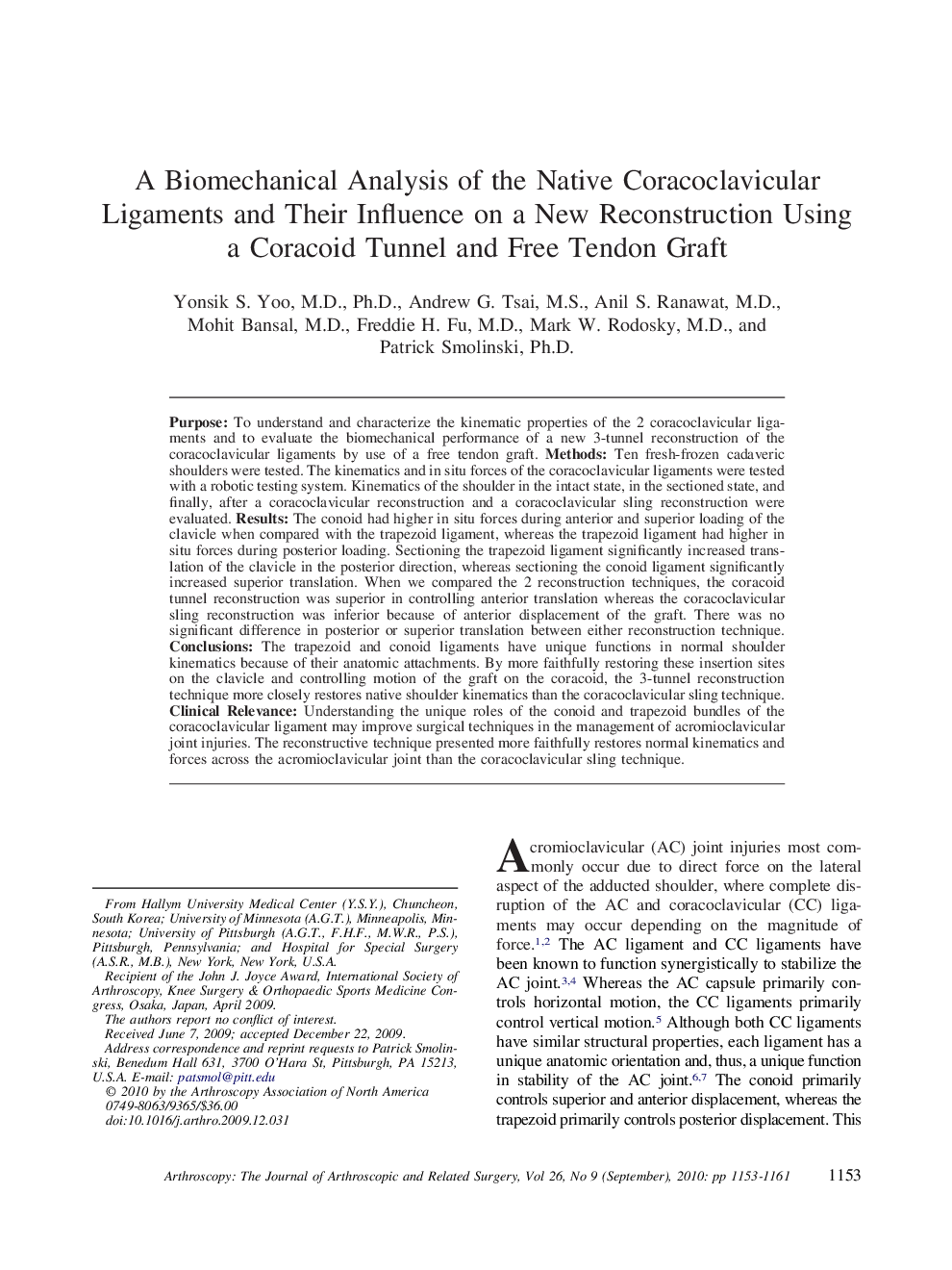| Article ID | Journal | Published Year | Pages | File Type |
|---|---|---|---|---|
| 4045239 | Arthroscopy: The Journal of Arthroscopic & Related Surgery | 2010 | 9 Pages |
PurposeTo understand and characterize the kinematic properties of the 2 coracoclavicular ligaments and to evaluate the biomechanical performance of a new 3-tunnel reconstruction of the coracoclavicular ligaments by use of a free tendon graft.MethodsTen fresh-frozen cadaveric shoulders were tested. The kinematics and in situ forces of the coracoclavicular ligaments were tested with a robotic testing system. Kinematics of the shoulder in the intact state, in the sectioned state, and finally, after a coracoclavicular reconstruction and a coracoclavicular sling reconstruction were evaluated.ResultsThe conoid had higher in situ forces during anterior and superior loading of the clavicle when compared with the trapezoid ligament, whereas the trapezoid ligament had higher in situ forces during posterior loading. Sectioning the trapezoid ligament significantly increased translation of the clavicle in the posterior direction, whereas sectioning the conoid ligament significantly increased superior translation. When we compared the 2 reconstruction techniques, the coracoid tunnel reconstruction was superior in controlling anterior translation whereas the coracoclavicular sling reconstruction was inferior because of anterior displacement of the graft. There was no significant difference in posterior or superior translation between either reconstruction technique.ConclusionsThe trapezoid and conoid ligaments have unique functions in normal shoulder kinematics because of their anatomic attachments. By more faithfully restoring these insertion sites on the clavicle and controlling motion of the graft on the coracoid, the 3-tunnel reconstruction technique more closely restores native shoulder kinematics than the coracoclavicular sling technique.Clinical RelevanceUnderstanding the unique roles of the conoid and trapezoid bundles of the coracoclavicular ligament may improve surgical techniques in the management of acromioclavicular joint injuries. The reconstructive technique presented more faithfully restores normal kinematics and forces across the acromioclavicular joint than the coracoclavicular sling technique.
